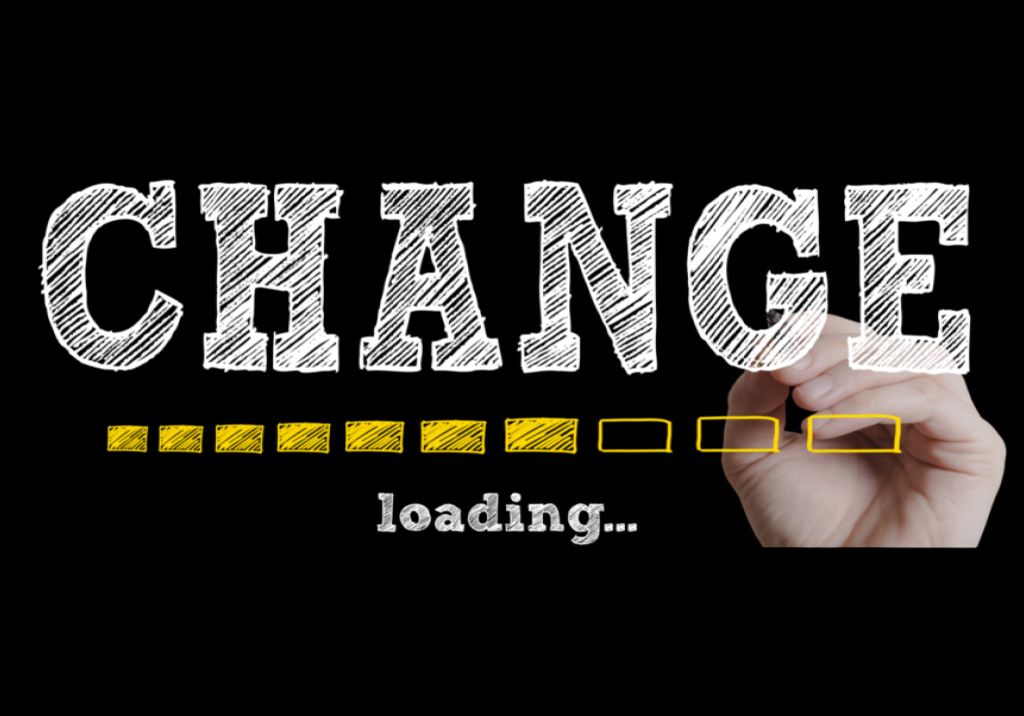New year, New You? Before you do, let’s discuss the difference between intentions and goals and how to harness the power of intention setting through change. Growth lessons come in all metaphorical shapes and sizes. We’ve heard them all. Two popular ways to discuss hidden but persistent growth are lessons from a gardener and a child learning to ride a bicycle.
When you plant the seeds, till the soil, and water the spot, there is seemingly no growth for a while. You don't see the roots grow down and out. It's not until you see the sprout emerge from the soil that there is visible evidence of change.
When a child learns to ride a bicycle, there can be what seems to be an endless cycle of training wheels and countless falls. One day it all seems to come together; balance combined with the history of practice allows the child to control the pedals and handlebars in perfect unison.
As you pay more attention to your mindset and that of others, remember that growth of any kind requires time, practice, and consistent intention. Goals focus on outcomes and results; intentions focus on the process (how).
Goals of the gardener: To have flowers and a crop to harvest.
Intentions of the gardener: To develop a lush garden and learn ways to sustain growth.
Goals of the child: Ride a bike
Intentions of the child: Learn to ride a bike.
Growth is the result of when intentions, actions, discipline, and patience align together. Often, there are times when we doubt we have made progress without persistent evidence. In seasonal climates, leaves change colors, dry up and fall to the ground. The tree remains bare for the winter, only to grow larger and more full each spring, as long as the root structures are protected. No one doubts the life cycle of nature. In the corporate world, we are quick to doubt growth, set goals, and even quicker to change the action with a focus on some distant future target when evidence of growth is not immediate and obviously apparent. Growth only occurs when you recognize the small nuances that result from action-oriented intentions and thinking of the immediate future versus one that is months or miles away.
“Intention is a distinctive practical attitude marked by its pivotal role in planning for the future.”
Michael Bratman
The "practical reasoning" concept developed by Michael Bratman called Belief-Desire-Intention model (BDI) kicks both of these examples into action. Intentions in this model are future-directed thoughts and partial plans. Before you try to achieve anything, establish intentions. In order For these intentions to turn into actions, you must possess the self-belief that you can accomplish and accomplish the outcome. You must believe you can learn the skills necessary and demonstrate the desire to work toward achieving the goal with persistence – based on an imagined outcome. Intention, formed from belief and combined with the desire to begin, through discipline, and patience, results in the actions toward achieving the goal.
Think about it: Have you ever set out to accomplish something that didn't excite you? What about setting out to accomplish something that lit a fire deep inside? Which action stage lasted longer? Which of these scenarios did you maintain over time? The persistence to see something through begins BEFORE your action steps.
You know the phrase: “It’s not about the destination, but the journey”? New Research published in the Journal of Technology, Knowledge, and Learning says this is accurate in practice, too. The study examined virtual educational settings to determine the role of intention-to-behavior related to course completion and assessment-based outcomes. The results-oriented aspect in this model is synonymous with “goal.” The action-oriented aspect is synonymous with intentions.
The type of intentions are divided into two sub-groups: result-oriented intention (e.g., to earn a certificate in the course); and action-oriented intention (e.g., to complete the tasks in the appropriate order to earn the certificate. The study findings revealed overall completion rates of courses and tasks were significantly higher when the study participants applied action-oriented intentions(journey/action) rather than results-oriented intentions (destination/goal).
Purposeful action-oriented intentions focus on processes. When the process is followed, success becomes an inevitability. In this intention-setting practice, map a series of steps. Make the steps and action items along the way the primary focus; with trust and patience, the outcome is a product of small actions over time. In results-oriented intentions, the focus is long-term, with the outcome always the main target.
20th-century philosopher Gertrude Elizabeth Margaret Anscombe noted an often misalignment between action and intention. In her action theory, Anscombe highlights a disconnect between action and intention. The completion of any task from conception to outcome depends on the creation of a list of the necessary steps and actions to take. The disconnect, Anscombe says, comes down to one of two things: either there is an error in recording the list, or an error in performing the tasks. Forcing yourself to take more time to set appropriate and attainable intentions ensures the pre-action intentions and lists are aligned with your environment, resources and availability of successful performance.
Change Enthusiasm™ combines the act of weekly goal setting with conscious choice intentions to ensure adherence and thought-action integrity in a weekly exercise you can repeat. Begin the week with a value to wish to grow and a more significant result-oriented intention for the full week. Then, set something small you can easily accomplish daily, given your current resources. Through this exercise, your focus shifts from the end of the week goal, to an actionable task you can perform every day. At the end of the week, give yourself the opportunity to assess your progress. What is the value you wish to grow? What is the end of week goal? Which intentions did you set? What did you do each day to deposit an action toward the direction of fulfilling your intentions?
Regardless of the words you choose to attach to purpose-driven action, the key is to recognize growth takes time. Set aside space for self-reflection and not jump into pursuing something. Set smaller targets to keep your focus and momentum along the way through larger changes.
Trust the process, keep your sights of accomplishing consistently small tasks with reliably action-oriented intentions, and before you know it, the sprouts will emerge. The seasonal changes will bring doubts, but the time you’ve spent reflecting and continued self-assessment will protect your root structure as you continue to grow.









